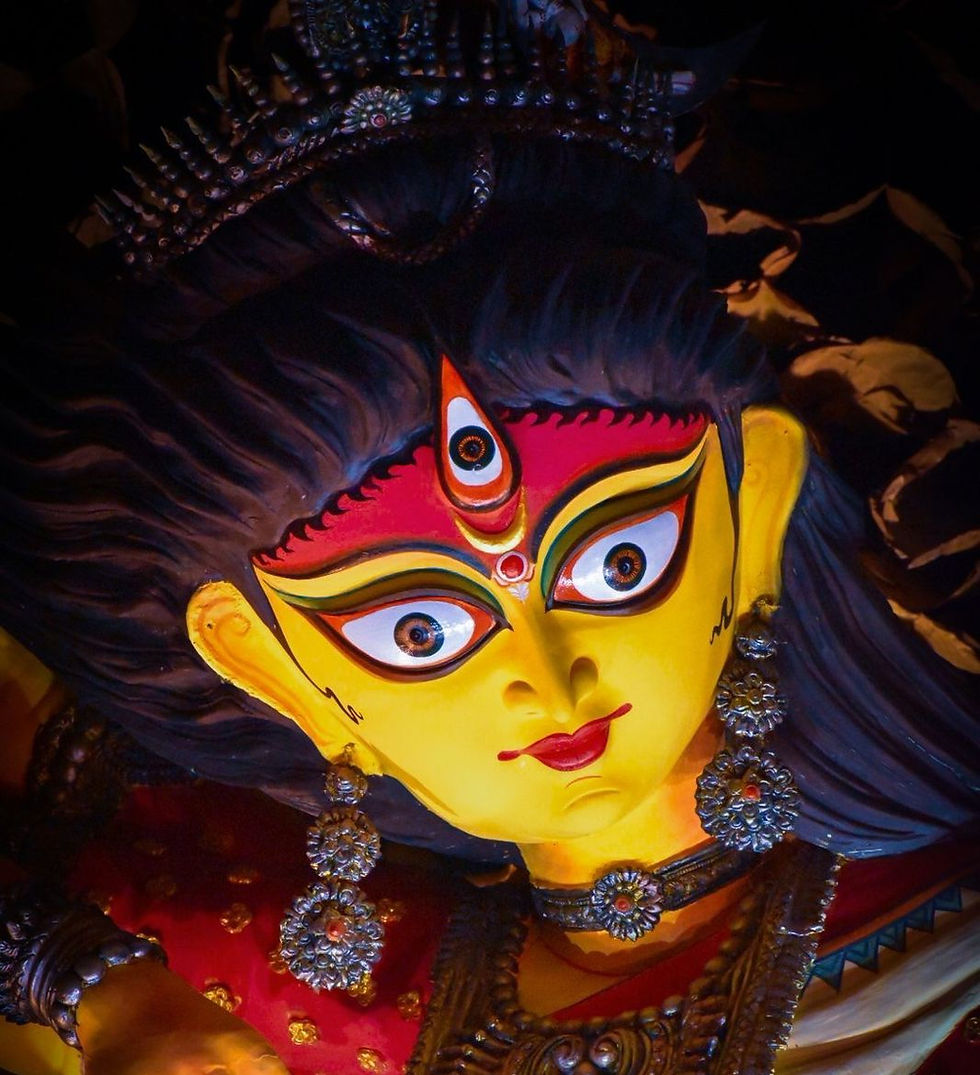Churning the Cosmic Self: The Untapped Potential and the Elixir of Enlightenment at Kumbh Snan at Prayag
- abhishek95764
- Jan 22
- 3 min read
A person who doesn’t come near realizing his or her full potential is good for nothing.
Since Mahakumbh is going on,Shiva appears in the gaatha (story) of the Kumbh, which is about churning of the ocean, where the symbolism is aspiring for moksha by experiencing the nectar, where the idea of immortality is about unifying with the cosmos and blending with the five elements.
The Kumbh at Prayagraj, the location of the confluence of the three rivers representing purity (Ganga), devotion (Yamuna) and knowledge (Saraswati) in the month of Maagh is special.
“The most important part of the Kumbh is the element of a cosmic force called amrit(nectar). The phenomenon that the sun is behind the moon in this phase and its heat and energy results in the release of the nectar generated in the moon.
The belief is that taking a dip in the sacred waters during the Kumbh brings the blessing of the nectar,The earliest story of the grand churning of the ocean of milk, samudra-manthan, for the nectar of immortality, amrita, is found in the Mahabharat.
The asuras serve as the counterforce. These enemies of the devas agree only because they are offered a share of the fruits of labour. But when amrita appears, the asuras are tricked and denied their share. Devas become immortal, not the asuras.The asuras have Shukra as their guru and he has access to sanjivani vidya that resurrects dead asuras. Asuras may not be immortal; but they can regenerate themselves and trouble devas endlessly.
That means devas cannot be all-powerful and eternally successful, even if they have amrita (The Same work in our Birth chart as Malefics (Asuras).
In the story of samudra-manthan, Shri Vishnu takes the form of Mohini and offers to distribute amrita fairly between devas and asuras. Enchanted by her beauty, both parties agree. Since the enterprise was initiated by devas, she begins by serving devas first. But one asura named Svarbhanu doubts Mohini’s intention and sits among the devas as one of them.
The Surya and the Chandra identify him, and Vishnu immediately cuts off Svarbhanu’s head.
The samudra-manthan is also equated with the turning of the year. When the devas are pulling, it is Uttarayana, when the days get longer and warmer. When the asuras are pulling, it is Dakshinayana, when days are getting shorter and colder. This is not a tug-of-war; this is manthan, a churn, where the devas and asuras have to collaborate, pull while the other pauses. Only collaboration generates amrita, seems to be the message (Means you need the influence of malefics and benefics in your birth chart to advance in your life objectives and achieve your goals)
Shri Vishnu divides the world by placing the devas above the sky and the asuras below the earth in patala. In this subterranean realm, every seed sprouts, and from here spring water, metal and gems. This is why Lakshmi is called Pulomi, the daughter of the as-king Puloman. emerges to become Vishnu’s wife, Sachi, during harvest time and returns to her father’s house during season.
When Lakshmi finally appears from the ocean of milk, she chooses as her husband not Indra, the king of devas, but Vishnu. Indra, the supreme deity of the Veda, is a junior deity in Puranas. He constantly fights asuras and is insecure about his position. He lacks the confidence, contentment, and grace of Vishnu. But she always comes back to Vishnu, as only he always upholds dharma. Her repeated return turns Vaikuntha into the ocean of milk, a realm of abundance.
By placing Vishnu above Indra, the collaborator is celebrated over the competitor. By placing Vaikuntha above swarga, the scriptures are positioning the spiritual above the material (higher octave). The spirit is eternal not the flesh, not the material world. The body decays and dies. The world rises only to fall.
We construct things for permanence, believing in 'happily ever after.' Each deva considers the defeat of asuras as final, while each asura believes that the vanquished devas never return. However, they are consistently proven wrong. Nature balances the nectar of immortality, amrita, with halahala, the poison consumed by Shiva, and sanjivani, which the asuras have access too. Every asura thinks he can cheat death but is invariably outsmarted.
As Yudhishthira told the yaksha when asked about the greatest wonder, 'Everyday people die, but the rest live as if they are immortal.'
The malefics are the counterforce, and we need them always.

.png)


Comments